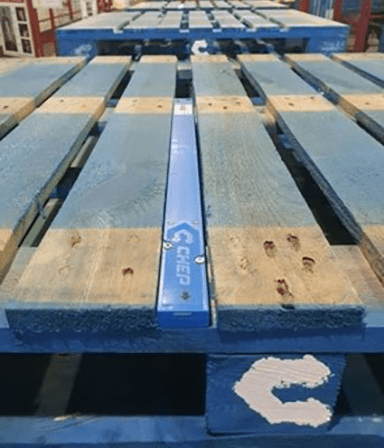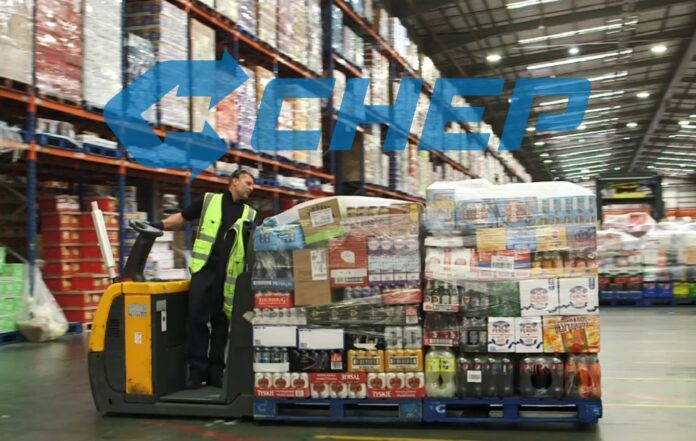Enterprise IoT Insights is putting together a report on IoT tracking in the supply-chain industry (in case recent posts have not made that clear), and the discussion has ebbed and flowed about the role of IoT, itself, in the sector’s broader transformation story. As the report will show, it has also revealed that, post-pandemic, the new global focus on rising energy costs and sustainability has also focused minds, and made IoT more than just a quick lockdown-fix.
However, the message is IoT should work as change-mechanic as part of a slower-burn for enterprises; they need to go carefully and completely, matching new data insights drawn from the edge, from goods-in-motion, into legacy warehouse and transport management systems, and sundry enterprise resource (ERP) functions. Most of all, the strategy should look to achieve total control and, potentially, total change of business operations.
Ask an analyst – Tancred Taylor, from ABI Research; a single well-placed analyst in this case – about companies that are engaged with deliberate and thorough IoT-featured change initiatives, and a couple of names come up; one of these is Australia-based logistics outfit Brambles Group, parent to pallet-pooling company CHEP, as well as to a digital division called BXB Digital, developing proprietary IoT for a global fleet of 360 million pallets, crates, and containers.

Taylor says: “CHEP has a long-term roadmap, which relies not just on putting wide-area trackers on pallets – which would be difficult for a company of its size, with millions of assets – but also how to use different tech to achieve different goals. It is taking small steps – thinking about which assets to focus on first, and how to inject pallets into the supply chain to identify pain-points. Rather than just willy-nilly chucking-in trackers to see what comes out.
“It is about that targeted approach to understanding the use case and what your pain points are, and how technology can solve that – and realizing you don’t need to just rely on IoT technologies. IoT plays a really important role, but there are loads of other things, from software down to barcodes, down to serialization, down to just changing the enterprise mindset. All of which is on the CHEP roadmap. It wants to do all of those things.”
He adds: “It is a really good example of how people are starting to think about the use of technology within supply chains. You don’t start with the technology; you start with the outcomes. Solution providers need to be flexible. Every customer and every supply chain is different, and they require really long roadmaps. You can’t spend millions just on building-in IoT, whatever that means. You can’t just make IoT a thing one day, and then it is all done.”
What does the Brambles Group say? Well, it provides a top-line forecast about tracker volumes, for starters; that it has so far deployed 250,000 pallets with “autonomous tracking” in the UK and Canada, with another 300,000 due in North America in the next 18 months. But that is not the story; Helen Lane, chief digital officer at the group, says the strategy is transformative in the proper sense – that its own business will change, just as its customers’ are changed.
She comments: “We aim to remove the need to think about pallets at all. We will use data to automate processes and predict challenges… [to] enable a frictionless experience. Our ambition is to use the same analytics… to deliver a better-Brambles, to shine a light on our customers’ supply chains… [and] to provide products and services that address shared industry problems.” A full transcript of the interview with Lane is included below.
Look out for the report on supply chain tracking next week.
…
What does digital transformation look like for Brambles as a business?
Lane: “The challenges we see across global supply chains highlight the importance of transforming our customer experience and the efficiency of our operations. To this end, our transformation programme will deliver new capabilities for customers and further optimise our business with a broad range of initiatives.

“We aim to get better at using the data we already have and add new levels of transparency by digitising our assets. By using this data to generate insights and drive better business decisions, we are improving the productivity of our assets, enabling data-driven conversations with customers, and optimising our supply chain through better forecasting and planning.”
What is the ambition, ultimately – in terms of efficiency gains, productivity and new services, sustainability?
Lane: “Eventually we aim to remove the need for our customers to think about pallets at all. We will use data to automate processes and predict challenges so we can get ahead and enable a frictionless customer experience. Our ambition is for our customers to think of Brambles as a partner who can help them unlock value and solve key problems in their own supply chains.
“So, our second step is to use the same data analytics capabilities we developed to deliver a better Brambles, to shine a light on our customers’ supply chains. This will allow us to provide insights and develop new products and services that address shared industry problems for our customers of today , which, in turn, helps us innovate to build the supply chains of tomorrow.”
Explain the importance of IoT tracking? Describe Brambles in terms of the tracking opportunity?
Lane: “We operate in 60 countries and own around 360 million pallets, crates and containers. A key part of the transformation is ‘smart assets’ – pallets with autonomous tracking devices – with over 250,000 deployed in total. Of these, 200,000 were deployed in the UK and Canada. We aim to deploy a total of 300,000 in North America by July 2024.
“We are confident about our approach to scaling these programmes as we have proven that the insights they generate provide clear benefits to our asset productivity and customer experience.
“Meanwhile we are testing our Serialisation+ tracking approach in Chile this year – combining smart assets with lower-cost QR tags and computer vision technology. These tests will be a discovery exercise to determine if this approach can drive value for our business and deliver a better customer experience.”
What are the biggest challenges for Brambles to drive digital change within the organisation? Are there cultural challenges? Are there skills challenges?
Lane: “The common aspect fundamental to delivering any of our benefits is talent. We need experts in data and change, who know how to reengineer processes, build analytics products and, importantly, work with the business and customers to capture value. Leading by example, we trained over three hundred leaders in the company on data analytics.
“This literacy work will ensure that every one of our leaders is equipped to spot and surface opportunities in our business from data and analytics, to understand how to work with use case development and, critically, their role in driving value capture from the insights that we surface. Finally, as data interpretation happens at the front line, we are investing in our organisation-wide data literacy.”

